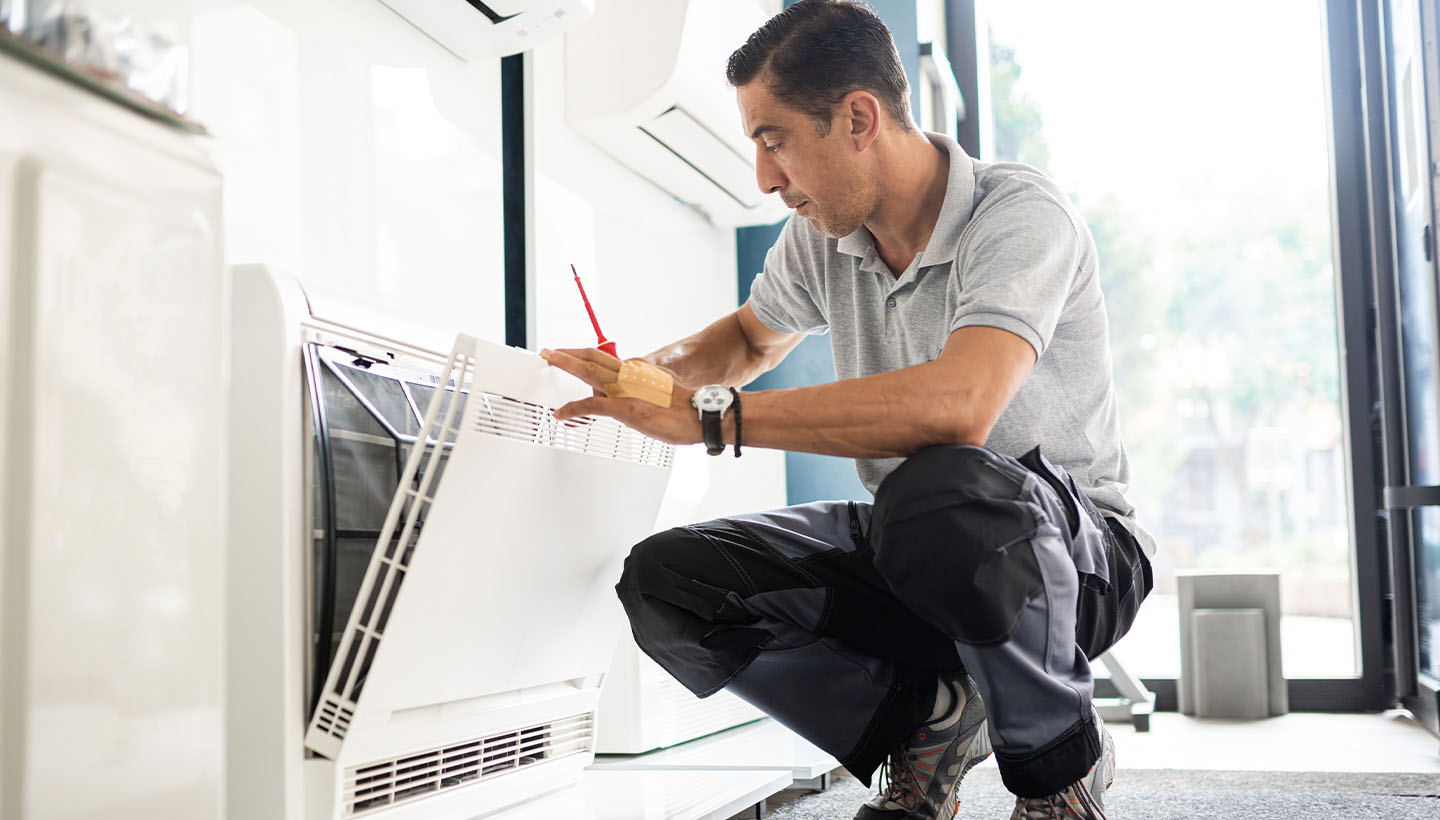
How to Become a Certified Air Quality Technician
Becoming an air quality technician is a great way to diversify your home inspection services, make more money per inspection, and help clients ensure their indoor air quality is safe. Most states don’t require you to be licensed to work as an air quality technician. However, clients often want reassurance they’re working with someone who is knowledgeable about air quality problems. That’s why it’s important to get certified.
Keep reading to learn what air quality technicians do, why they’re important, and how to become certified as one.
What is an Air Quality Technician?
Air quality technicians have many different monikers. These include:
- Air quality specialist
- Air quality tester
- Air quality inspector
- Air quality engineer
- Air quality analyst
Regardless of their name, their focus is the same. Air quality technicians evaluate indoor air quality, identify problems that could lead to health issues, and recommend solutions for healthier indoor air.
Home inspectors can be certified as indoor air quality technicians with special training that takes a few weeks or a few days. Adding this specialty to your inspection services means you can bring in more income per inspection and create a new revenue stream to lean on if inspection business slows.
Why is Indoor Air Quality Testing Important?
According to the U.S. Environmental Protection Agency (EPA), indoor air can be up to five times more polluted than the air outside. You can read more about indoor air quality using the EPA’s Guide to Indoor Air Quality. When left untreated, poor indoor air quality can cause serious respiratory health problems for anyone living in the environment.
Common indoor air pollutants include:
- Mold and mildew
- Dust mites and other allergens
- Volatile Organic Compounds (VOCs)
- Radon
- Asbestos
- Carbon monoxide
- Excess humidity
- Fumes from new building materials, furniture, or textiles
- Pesticide traces from outdoor sources
- Airborne particles from fuel-burning appliances
Homes and buildings today are built more tightly and designed to be more energy efficient. But tighter construction also means less natural air ventilation and reduced air circulation. Both are important to naturally reduce indoor air pollutants.
4 Steps to Becoming a Certified Air Quality Technician
As with other home inspection certifications, there are a few recommended steps to becoming a certified air quality technician.
1. Learn Your State’s Air Quality Technician License Requirements
First, you’ll need to research and understand your state’s air quality technician regulations. Will you need a license or certification to offer this service? Are there state-specific training requirements you must meet? Find out to ensure you remain compliant.
In most states, you’re not required to have a license to perform air quality testing. Even so, it’s important to know what you’re doing. Clients with real concerns will want to work with certified professionals who understand and follow the national standards.
2. Complete Air Quality Technician Education
As an air quality technician, you’ll need to have comprehensive knowledge of indoor air quality problems, pollutants, standard methods for testing, interpreting lab sample reports, and fixing common problems.
You’ll learn these skills and more when you take an indoor air quality technician certification course. When researching courses, keep in mind that your state may have specific curriculum requirements the course needs to meet. Be sure you understand these regulations (if any) before signing up.
AHIT’s Indoor Air Quality Technician Course is a 16-hour certification course that teaches the standard industry methods for air quality testing. Additionally, you’ll learn:
- How to identify pollutants and unsafe levels
- How to work with testing labs and read lab results
- How to advise clients on solutions after your assessment
Alongside earning an air quality certification, you might also consider adding radon testing and mold testing certifications to your credentials since both are closely related.
3. Purchase Air Quality Measuring Tools and Equipment
Air quality technicians have many tools at their disposal to evaluate the health of indoor air. Using what you learned during your education, you’ll need to assemble your air quality technician toolkit. Consider these to start:
- Air Quality Monitor. Measures air temperature, humidity, and carbon dioxide levels.
- Airborne Particle Counter. Measures the concentration of airborne particles in the air.
- Moisture Meter. Measures moisture content in specific areas and materials.
- Multi-Gas Monitor. Detects the presence of gaseous and VOC particles in the air.
- Mold Testing Kit. Detects presence of mold in the air or on surfaces.
- Radon Testing Kit. Measures radon levels in the air.
- Anemometer. Measures airflow speed and direction for HVAC systems.
Remember, just as you started with the basic tools in your home inspector toolkit, you can start with the basics for air quality testing. As you bring in more income, you can upgrade to additional tools. Get more guidance on indoor air quality testing methods and tools for each type of airborne pollutant in this EPA article.
4. Network and Establish Your Air Quality Inspection Business in Your Area
Armed with the latest tools and a certification, your final step is to begin marketing yourself as an air quality technician. This is similar to marketing your home inspection services, and the two services nicely complement one another. Here are a few key strategies to establishing your business and generating clients in your community.
- Promote Yourself. Promote your indoor air quality testing services by adding this service to your existing home inspector website or by creating a separate website. You can also promote your new service on social media and via direct mail. Plus, ensure that every home inspection client you work with knows you’re also certified to evaluate their air quality.
- Network. Network with real estate agents, building contractors, construction specialists, and even other home inspectors (who don’t already offer air quality inspection services) in your area. This helps you get your name out there and get valuable referrals.
- Work Your Contacts. Let your past home inspection clients, industry colleagues, family, and friends know you now offer certified air quality inspection services. Discuss the importance of monitoring air quality and ask them to keep you in mind when they might need someone to evaluate an issue.
- Join an Indoor Air Quality Association. – Joining one of the many indoor air quality associations can help you stay up to date on industry best practices. As a member, you can also get listed (and found easily by clients) in association directories. Get a list of the major associations in the additional resources below.
Frequently Asked Questions About Becoming an Air Quality Technician
Do I Need a License to Be an Air Quality Technician?
The answer here depends on your state. Most states don’t require air quality technicians to have a license. But those who have earned a nationally recognized certification will most certainly stand apart from non-certified competitors.
What is the Average Air Quality Technician Salary?
According to ZipRecruiter, the national average salary for an air quality technician is $48,038. Of course, this salary level depends on many factors. Consider also that many air quality specialists perform this service in addition to standard home inspections. Offering air quality testing and evaluation can help you make more money per home inspection and opens a revenue source when standard inspection jobs slow.
According to HomeAdvisor, the average cost of professional indoor air quality testing runs between $300 and $600, depending on the scope of the project.
A Note About Commercial and Industrial Air Quality Technician Salaries
In this blog, we’re primarily discussing air quality technicians who work with residential clients. Air quality technicians may also provide valuable services in industrial and commercial settings – usually in full-time positions with higher salaries. These roles often require certifications from the Occupational Health and Safety Administration (OSHA) and the EPA as well as some college coursework or a bachelor’s degree in environmental science.
How Much Does It Cost to Become an Air Quality Technician?
Indoor air quality certifications can run between a few hundred dollars to a few thousand, depending on who offers the course. AHIT’s course, for example, runs just under $400 and pays for itself in as little as a few home inspections.
How Long Does It Take to Become an Air Quality Technician?
The time it takes to earn a certification in indoor air quality testing varies depending on your availability to complete the course. Generally, the process can be completed within a few weeks or even days. For perspective, AHIT’s 16-hour course can be completed in two days when treated like a full-time job!
Additional Resources
- Learn more about indoor air quality using the EPA’s indoor air quality information center.
- Visit one of these major indoor air quality associations to learn more about providing air quality testing as a service:
- Learn more about different home inspector specialties and certifications you can earn that complement your home inspection business.
Adding an air quality technician certification to your skillset is a worthwhile move to increase your home inspector bottom line.




